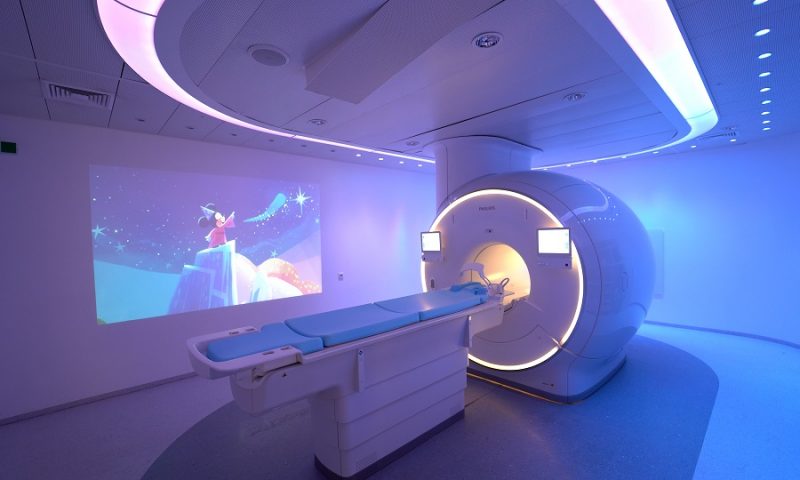Getting an MRI has never been a walk in the park. Being fed into a large, almost unnaturally heavy machine powered by unseen forces—and almost always kept in the basement—is understandably unsettling, especially for a child. But it’s something Philips hopes to make a little bit brighter.
The imaging giant has been working with the Walt Disney Company to test out specially made animations and stories for its scanners to help reduce the fear and anxiety surrounding such a procedure.
Dubbed the Philips Ambient Experience, the program combines soft and dynamic colored lighting with video projections to help build a relaxing atmosphere. The project will be trialed at six hospitals across Europe over the summer and marks Disney’s first foray into clinical research of this kind.
“I have seen first-hand that MRI scans can be intimidating for children, and I like how focused Philips is on the patient experience,” said Jan Koeppen, president of Disney’s divisions in Europe, the Middle East and Africa. “We are excited to see the results of the clinical research and to quantify the impact our characters can have in this environment.”
The two will use a series of animated shorts featuring some of the company’s most famous characters—from Mickey Mouse and Aladdin to Yoda and Marvel’s Avengers—in customized stories created by Disney animators with clinical guidance from Philips.
Philips’ ambient programs have already been installed at 2,000 imaging locations globally, allowing patients to personalize the room’s lighting and themes as well as offering video entertainment while within the bore of the scanner.
The company hopes that programs designed for children will not only help allay stress going into the procedure, but help also build trust with hospital staff and make the entire process easier by having the patient remain still enough for a scan to be completed correctly.
“A visit to the hospital can be quite intimidating for people, and especially children, where a more patient-friendly, patient-centric environment could help improve the patient experience and help drive first-time-right imaging for improved outcomes,” said Kees Wesdorp, chief of Philips’ precision diagnosis business.
Philips showcased its ambient experience technology during the virtual meeting of the European Congress of Radiology, where it also announced the FDA clearance of its cross-functional CombiDiagnost R90 system—which includes both remote-controlled fluoroscopy and digital radiography—as well as the debut of an artificial-intelligence-powered software suite for its Incisive CT platform.
The company also disclosed it would incorporate Lunit’s Insight CXR chest detection software into its diagnostic X-ray systems. The program, which has also been brought to GE Healthcare’s scanners, detects 10 of the most common chest X-ray findings including signs of tuberculosis and pneumonia, which can be an initial indication of COVID-19.

